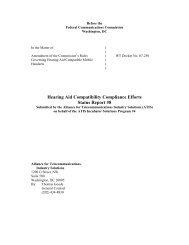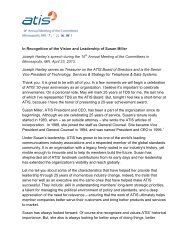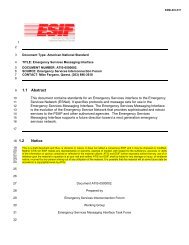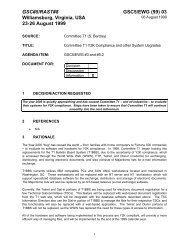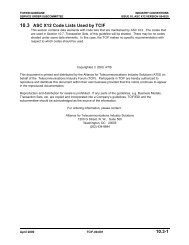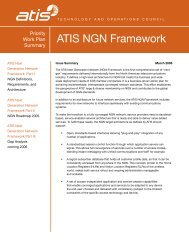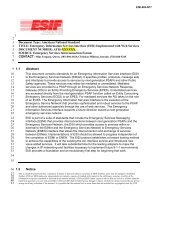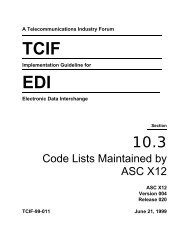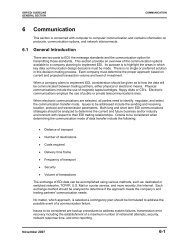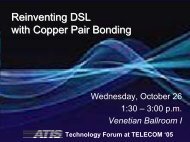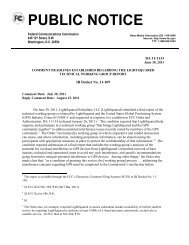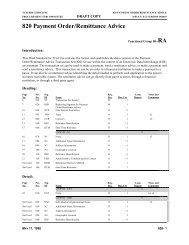Next Generation ESNet Arch Requirements - ATIS
Next Generation ESNet Arch Requirements - ATIS
Next Generation ESNet Arch Requirements - ATIS
- No tags were found...
Create successful ePaper yourself
Turn your PDF publications into a flip-book with our unique Google optimized e-Paper software.
Figure 7-5 illustrates <strong>ESNet</strong> initiated service request. The message exchange between theCESE and RG follows the same asynchronous behavior when the RG initiates themessage exchange. That is, the RG may request a service (Step 1) and the CESEacknowledges the request (Step 2) while processing the request. The CESE responds withthe information (Step 3) and the RG acknowledges the response (Step 4). Some servicesmay just require a simple request and acknowledgement (Steps 1 and 2).Figure 7-5 <strong>ESNet</strong> Initiated Services7.1.3 Emergency Event ProcessingWhen the CESE submits a new emergency service request message to the <strong>ESNet</strong> theremay be multiple sources of information in response to the event. Therefore, for a givenevent, the ESMI supports a dialog between the CESE and RG. The processing to supportEmergency Event management is initiated by the CESE’s Emergency Service RequestMessage as shown in Figure 7-6. First the RG acknowledges the CESE’s emergencyservice request message. The RG can now deliver response messages for the given eventthat contain information related to the event. Each response message from the RG to theCESE is acknowledged by the CESE to the RG. Response messages can continue to bedelivered from the RG to the CESE, as defined by the specific application attributes whichcaused the event, until the CESE sends an event complete message to the RG. When theRG receives an event complete message it will suspend sending any further responsemessages to the CESE related to the specific Emergency Event.7 Version 1 9/23/04




